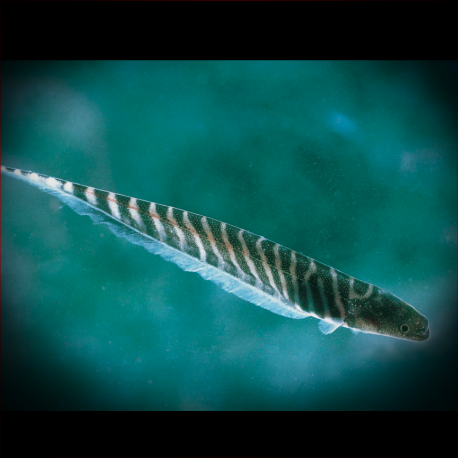More info
Datasheet
| Minimum Tank Size | 680 litres / 179.64 US gallons |
| Maximum Size | 60.0cm / 23.62inches |
| Temperature | 22°C / 71.60°F - 28°C / 82.40°F |
| Hardness | 2-15ºdH |
| pH | 6.0-7.5 |
General Description
The Banded Knifefish, scientifically known as Gymnotus Carapo, is a species that requires an experienced aquarist due to its significant adult size and sensitivity to certain aquarium medications. It belongs to the Gymnotidae family and is a fascinating oddball addition to community tanks of larger fish. This fish has a vast natural distribution across Central and South America and is recognized for its territorial behavior, requiring substantial tank space to house more than one specimen together.
Aquarium Setup
When setting up an aquarium for the Banded Knifefish, a minimum tank size of 680 liters is recommended. Decor elements like large stones, bogwood, twisted roots, and live plants are appreciated, providing ample cover for the fish. These fish are more active in dimly lit conditions, so dim lighting or floating plants to diffuse light can be beneficial. Water conditions should be maintained with a temperature range of 22-28°C, a pH level of 6.0-7.5, and a water hardness of 2-15°dH. For additional details, refer to the accompanying table.
Behaviour
The Banded Knifefish is known to eat small fish but can coexist with similarly-sized species in a sufficiently large tank. It should not be kept with overly boisterous or aggressive tank mates as this may cause the fish to become withdrawn. Suitable tank companions include large cichlids, Characins, Cyprinids, catfish, and Loricariids. However, Banded Knifefish are territorial towards their own species, necessitating a massive tank to house more than one individual successfully.
Feeding and Diet
In terms of feeding, Banded Knifefish thrive on live and frozen foods such as bloodworms, prawns, earthworms, and tubifex. They typically do not accept dried foods readily, so a varied diet of live and frozen foods is essential for their well-being.
Reproduction & Dimorphism
Although breeding of the Banded Knifefish in captivity is rare, some aspects of their reproductive behavior are known. During the wet season, these fish engage in paternal mouthbrooding, with the male creating a nest to protect and brood the eggs and fry. Information about sexual dimorphism in this species is currently unknown.
Habitat and Distribution
The Banded Knifefish is commonly found in sluggish or still waters, showing a preference for turbid environments. They can also inhabit deeper parts of main river channels, displaying benthic behavior as bottom-dwelling fish. With a distribution spanning across countries such as Mexico, Brazil, Argentina, and Venezuela, the species has a significant presence in various regions of Central and South America.

